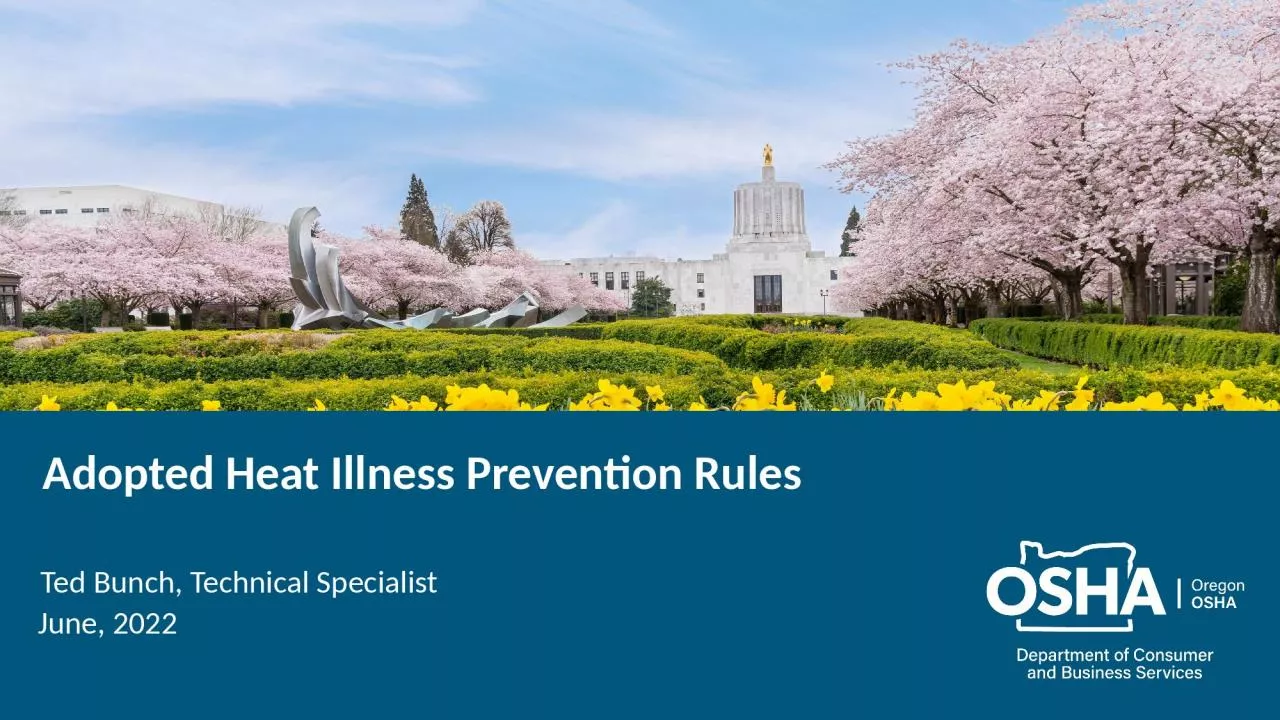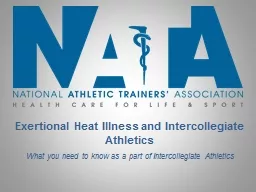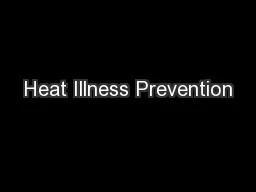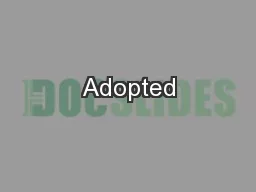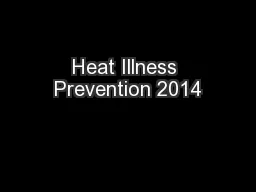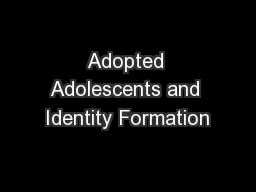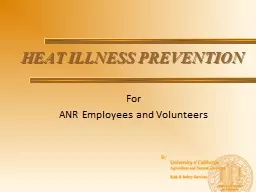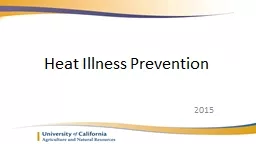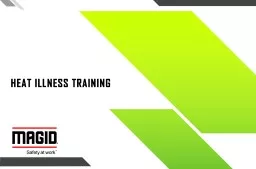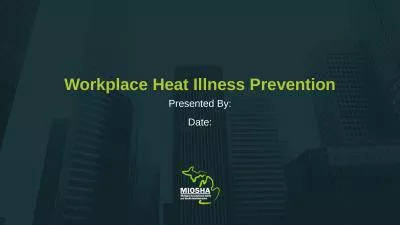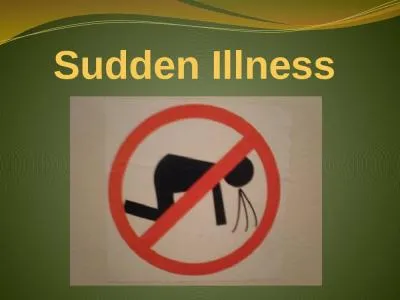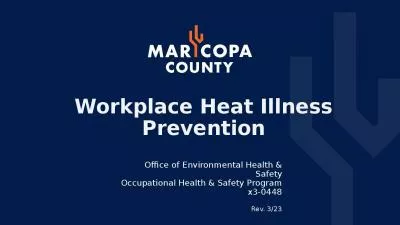PPT-Adopted Heat Illness Prevention Rules
Author : ThoughtfulTurtle | Published Date : 2022-08-03
Ted Bunch Technical Specialist June 2022 Heat Illness Prevention Additional applicability 4370030005 Additional applicability 4370070004 Applicability of Rules
Presentation Embed Code
Download Presentation
Download Presentation The PPT/PDF document "Adopted Heat Illness Prevention Rules" is the property of its rightful owner. Permission is granted to download and print the materials on this website for personal, non-commercial use only, and to display it on your personal computer provided you do not modify the materials and that you retain all copyright notices contained in the materials. By downloading content from our website, you accept the terms of this agreement.
Adopted Heat Illness Prevention Rules: Transcript
Download Rules Of Document
"Adopted Heat Illness Prevention Rules"The content belongs to its owner. You may download and print it for personal use, without modification, and keep all copyright notices. By downloading, you agree to these terms.
Related Documents

